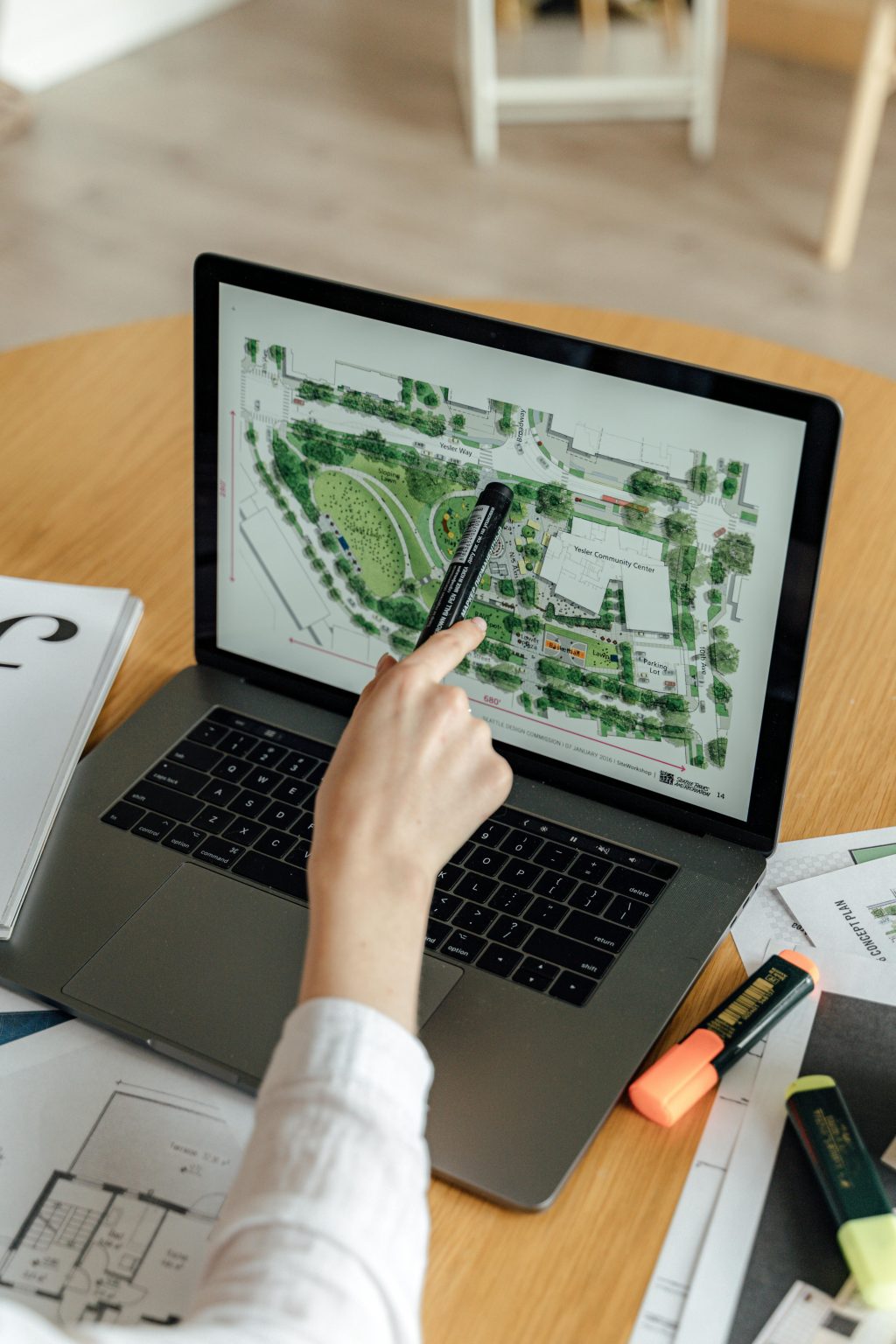The growing importance of green building practices in addressing environmental concerns, with a focus on energy efficiency, resource conservation, and occupant well-being, necessitates innovative solutions. Building Information Modelling (BIM), a sophisticated digital platform facilitating real-time collaboration and construction process visualisation, emerges as a promising tool to enhance efficiency in construction projects.
Central to this innovation is BIM information management, which enables better coordination, data usage, and sustainability outcomes across the project lifecycle.
This article explores the role of BIM in advancing sustainability in construction projects.
How BIM Improves Sustainability in Construction
Design Phase
During pre-construction, architects and designers can visualise their buildings long before a brick has ever been laid! The 3D Building Information Modelling models give architects the relevant information they need to make decisions based on efficiency.
Data can be utilised to implement and improve energy saving measures at all stages across the lifecycle of the project.
Additionally, buildings that have harnessed power of BIM in early design stages have a greater chance of securing LEED certification status. It is pertinent here to mention that LEED-certified buildings enjoy the status of most sustainable structures on earth. Therefore, every building or new project should strive to get the LEED certification.
Accurate modelling
Designers can’t be more thankful to BIM as it provides them with incredibly detailed and sophisticated models. Using these exact models, designers can then ensure sustainability across the whole structure. Thanks to BIM, designers can literally see different factors such as indoor air quality, ventilation, and heat transfer on the screen.
There’s more to it. Designers can made changes to the models in the prior stages and instantly if the results aren’t as per expectations. It saves hours of time, keeping project timelines on track and saving significant amount in reworks.
Likewise, BIM models play a key role in advancing energy-efficient design strategies. A prime example is passive solar design, where BIM’s 3D modelling capabilities allow teams to simulate and evaluate various window layouts. These simulations help assess how much natural light can be harnessed to reduce reliance on artificial heating systems, enabling more precise and informed daylighting decisions.
The financial and time-related benefits of sustainability in construction are too many to ignore.
Sustainable building materials
One of the major problems which kept project managers at stakes is making accurate predictions about the right construction materials. Enters BIM, empowering all stakeholders to pick the most sustainable materials that have minimum environmental impact.
Thanks to advancement in technologies, now there is a rising trend to use recycle materials in new construction projects. Here BIM assists by highlighting areas where this may be possible. When you produce more eco-friendly buildings, you slash carbon footprints and play your part in improving sustainability around the world.
Construction Phase
As soon as your teams are done with designing designs, analysing them, and signing off, the construction process kicks off. Unarguably, it is safe to say that this phase in construction generates the largest impact on the environment. Every time a machinery is switched on, the size of the project carbon footprints increases.
However, BIM can again play its part in reducing carbon footprints. Implementing BIM supports more sustainable construction practices on multiple fronts. Sustainability goes beyond simply incorporating recycled materials—BIM fosters a mindset shift across the industry, enabling smarter resource use, improved efficiency, and long-term environmental responsibility that future generations can build upon.
Reduced wastage
A survey carried out by US Environmental Protection Agency (EPA) almost 30% of all building materials entering a construction site go to waste. What does it mean? It means an unimaginary amount , probably hundreds of millions of tonnes, of wood, drywall, and bricks end up in landfills across the globe each year. This alone make the construction section one of the biggest contributors to global waste.
However, BIM can be used to address this issue. Some of the major reasons behind excess waste are human errors and poor cost estimations. By using BIM, accurate calculations can be made about the required quantities of materials. It will cut down over ordering of materials and unnecessary waste.
Prefabricating fixtures in an off-site facility also contributes to greater sustainability. With fewer deliveries required, there’s less waste generated and removed from the construction site. Off-site fabrication also makes it easier to reuse and recycle material offcuts. The result is a cleaner, more efficient site with reduced emissions of dust, fumes, and chemicals into the environment.
Faster building schedules
BIM keeps construction projects on track as it makes construction and design teams to collaborate more efficiently. The less time a project completes to take by adhering to deadlines and by slashing reworks, the less toll it will have on the environment in terms of machinery, noise pollution, and energy consumption.
Additionally, BIM streamlines every aspect of the building project and delivers greater efficiency across the board! By implementing BIM processes, data in stored in one central location the same becomes a single source of truth. It also means stakeholders can access the most current information at any time. This feature of BIM enables faster discussions and improve decision making without the delays of lengthy meetings or formal approvals.
Future Maintenance
The benefits of BIM go beyond project lifecycle and further go to facility management. After construction has been completed, BIM remains critical to the ongoing maintenance of the building.
BIM provides huge level of details in form of BIM models, contractors are now passing a great amount of information to building managers, making facility management a breeze.
Conclusion
Sustainability is at the top of the agenda for every industry these days, particularly construction, and for good reason! Wastage figures and emission levels are already critical, meaning radical change needs to take place.
BIM has proven to improve upon many of the environmental issues concerning construction! It offers greater transparency during the building design phase as every stakeholder can input their expertise early in the process.
It promotes higher efficiency throughout the construction process with accurate scheduling and ordering capabilities. BIM also provides building managers with more control during the operational phase. By tracking energy use they’re able to make decisions that can have a positive effect on sustainability going forward. BIM technology is readily available right now to ensure future generations can flourish and our buildings are as environmentally friendly as possible. So, why wouldn’t we take advantage of that?



